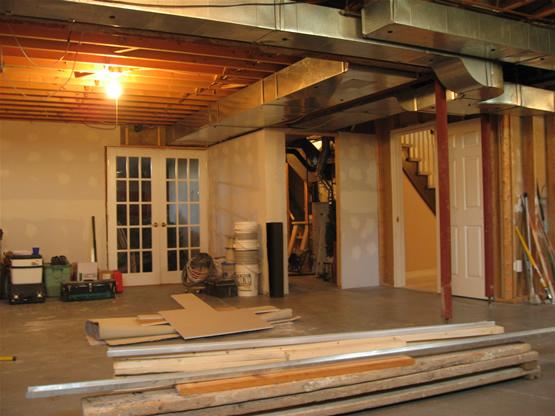2. Measure Moisture
Never ignore a moldy and musty space, especially if you are considering a remodel. Moisture problems are common in atics. If you aren’t sure if your space has the right humidity levels, you can do a little moisture test.
Cut a couple of 2-ft by 2-ft plastic sheeting pieces and tape them to the floor, walls, and ceiling. Come back in a week to see if any condensation has accumulated on the plastic.
A simpler way would be to purchase a hygrometer/thermometer device to measure the temperature and humidity levels. The ideal indoor humidity range is somewhere between 30% and 50%. If you detect any water spots or moisture problems, you may need to seal your foundation, fix plumbing leaks, improve drainage, and/or add some waterproofing.
If it’s just high humidity, however, a properly designed HVAC, ventilation, and humidification system should be able to keep your moisture levels under control.
Contact an HVAC expert to test your moisture and humidity levels before planning your remodel.
3. Indoor Air Quality and Volatile Organic Compounds (VOCs)
VOCs are all around us. They get emitted from a wide variety of common household products including: nail polish remover, paint, glue, carpeting, any fuel-burning process, air fresheners, cleaners, and detergents.
Offgassing occurs when chemicals, gasses, and VOCs get released into the air. Many building materials are notorious for offgassing. Research your products and building materials on the U.S. Department of Health and Human Services website, which contains a wealth of information on nearly every home product.
VOCs and offgassing are extremely harmful in high doses, but can be effectively managed with proper handling and ventilation. Learn more about ventilation solutions.
4. Carbon Monoxide
Carbon monoxide (CO), as you probably know, is an odorless and colorless gas with the potential to kill. CO is a byproduct of the combustion process. Generators, stoves, furnaces, water heater, and barbecues all produce carbon monoxide.
- If your remodeling project requires temporary power from a generator, make sure it is at least 20 feet away from the home. Never run a generator indoors!
- Do not tamper with any of your fuel-burning appliances or vent system on your own. Without proper ventilation, combustion fumes can get trapped in the home, leading to neurological damage, dizziness, nausea, and potentially, death.
- Speak with an HVAC specialist about proper ventilation for your remodel or home addition.
HVAC Zoning Systems (Ductless Mini-Split Heat Pumps)
If you don’t have an existing HVAC system in your remodeling space, consider adding a ductless mini-split unit. Here are some of the reasons why ductless mini-splits are popular choices for add-ons and remodels:
- Small and sleek appearance
- Provides heating and cooling
- Has its own thermostat
- Easier to install
- No ducts
- Interior design flexibility
- Safer (window air conditioners and through-the-wall systems contain security vulnerabilities)
Keep in mind that finding HVAC specialists for ductless mini-splits can be difficult. Make sure you hire qualified contractors with lots of experience installing HVAC zoning systems.
Don’t make the mistake of going through with a remodeling project without considering all of the heating, ventilation, and air conditioning needs of your new space.
Speak with your local HVAC specialist before and after your next add-on or remodel. If you have any questions, don’t hesitate to contact us at Xtreme Service & Repair.



